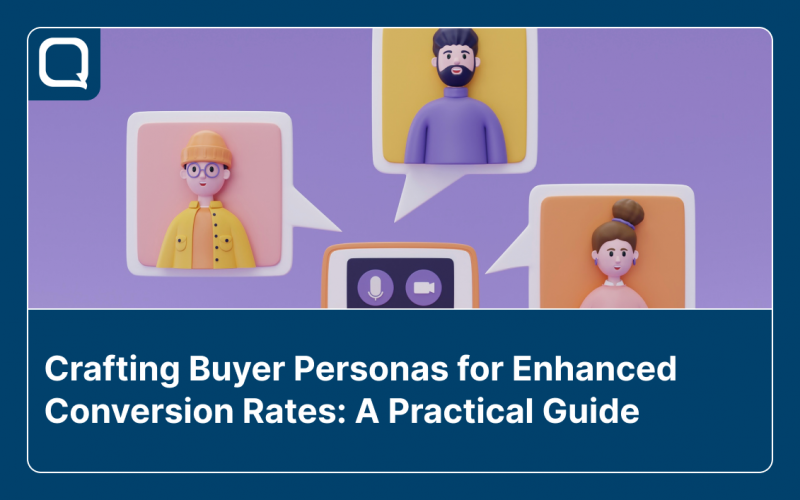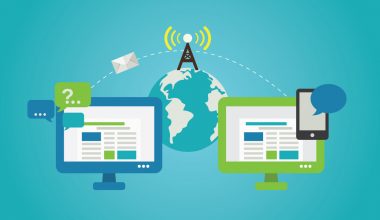When your product fails to capture the immediate attention of potential customers, it’s not necessarily indicative of an insufficient marketing budget. Instead, it may signify an inadequately defined buyer persona. Have you meticulously crafted the appropriate buyer persona for your product?
Before delving into the intricacies of defining a buyer persona and the steps involved in its creation, it’s imperative to recognize that comprehending customers requires more than just primary data, such as demographics and geography; it necessitates a deeper understanding. Hence, the significance of the term “buyer persona.”
What is a Buyer Persona?

Buyer personas represent the defining characteristics of potential buyers for your product. They encompass not only demographic and geographic attributes but also the daily habits and behaviors of consumers. For instance, a 30-year-old woman who is employed will exhibit different activity patterns compared to one who isn’t.
From this understanding, it becomes evident that as marketers or business owners, we must adeptly tailor promotional messages to these distinct target audiences.
Buyer personas serve as the ideal depiction of your prospective customers. Even if you and your competitors offer similar products, the constructed buyer persona may vary. By comprehensively understanding this buyer persona, you can efficiently connect with potential customers, thereby enhancing sales conversion opportunities.
READ MORE: How to Offer Products to Customers: Becoming More Targeted
Why Buyer Persona is Important
Crafting buyer personas holds numerous advantages for your business, particularly in today’s customer-centric landscape where emphasis on customers extends beyond marketing to product development.
Outlined below are several compelling reasons why creating a buyer persona is crucial for business success:
1. Enhance Customer Understanding
While understanding what your customers desire is essential, delving into their psychographics, behaviors, and values provides a distinct business advantage. Buyer personas facilitate a comprehensive comprehension of your ideal customers’ behaviors, right down to the minutest details.
2. Elevate Marketing Strategy Effectiveness
Developing a clear image of your ideal customer enables businesses to craft tailored marketing strategies effortlessly. Buyer personas aid in presenting pertinent and impactful content and messages to your target audience.
In today’s digital age, AI Assistants can also assist in message composition by leveraging insights derived from buyer persona preferences. By delineating buyer persona specifics, you’ll receive support in crafting messages that resonate with your target market.
3. Facilitate Personalized Customer Interactions and Marketing
Buyer personas empower you to deliver personalized marketing and customer service experiences. This personalization extends beyond mere name greetings to encompass language usage, product preferences, and addressing customer engagement and loyalty requirements.
According to data from HubSpot, 96% of customers value personalized marketing efforts undertaken by businesses. Such personalization can be effectively implemented with the foundation of a well-defined buyer persona.
READ MORE: Qiscus AI Assistant: Make Customer Interactions More Valuable
4. Boost Sales Conversion Rates
Utilizing buyer persona data facilitates the creation of more targeted marketing and sales strategies. By discerning which tactics are most effective for a specific target market, businesses can ensure their efforts are precise, efficient, and ultimately lead to increased sales conversions.
5. Enhance Customer Satisfaction
The ultimate outcome of crafting buyer personas is heightened customer satisfaction. Deep comprehension of buyer personas equates to a thorough understanding of your customers’ needs and desires. Armed with this insight, you’re prepared and equipped to deliver services and products that align with their expectations, thereby fostering greater customer satisfaction.
How to Create a Buyer Persona
The creation of a buyer persona involves several key steps that serve as a foundational reference point. Here’s a comprehensive guide outlining the essential steps:
1. Conduct Research
Gather customer data to inform the development of your business’s buyer persona. Various methods for data collection include:
- Reviewing conversation histories
- Analyzing purchase records
- Assessing customer satisfaction questionnaire responses
- Hosting focus group discussions (FGDs) to delve deeper into customer insights
Tailor your data collection methods to suit the specific needs and characteristics of your business and target audience.
READ MORE: 5 Examples & Types of Customer Satisfaction Survey Questions
2. Define Key Characteristics
Identifying the primary characteristics involves determining the specific data points to collect. Essential data elements that shouldn’t be overlooked include:
- Customer demographics, encompassing name, age, and gender
- Customer psychographics, comprising purchase behavior and media usage habits
- Customer behavior, including nuanced preferences such as preferred shopping methods, core values, and entertainment inclinations
3. Create a Buyer Persona Profile
Subsequently, proceed to craft a comprehensive customer profile. This profile entails developing a detailed persona complete with a name, physical attributes, backstory, demographics, and psychographics derived from existing customer data. This approach ensures an accurate representation of the intended buyer persona.
4. Implement Buyer Persona
Upon finalizing your buyer personas, leverage them to inform and tailor your marketing or customer service strategies effectively. Capitalize on the insights provided by your buyer personas to optimize product penetration within your target market.
5. Regularly Update Buyer Persona Data
Maintain the relevance of your customer data by periodically updating it. Continuously refresh your customer database to ensure you have the most current depiction of your buyer personas. Furthermore, strive to refine and enhance your buyer personas over time to render them more precise and reflective of evolving consumer behaviors and preferences.
Buyer Persona Examples
Here are two illustrative examples of buyer personas that can serve as references for different industries:
1. Food Industry Buyer Persona Example:
Here is an example of a buyer persona that you can use if you are running a food industry, you can add some data or descriptions according to data findings in the field later.
- Name: Meli
- Age: 21 years old
- Gender: Female
- Location: Bandung
- Income: Rp 4 million – Rp 6 million per month
- Personality: Cheerful and adventurous; enjoys trying new experiences
- Habits: Enjoys discovering new dining venues; utilizes social media for restaurant recommendations; frequently makes online food purchases; actively shares dining experiences and recommendations on social platforms.
READ MORE: Customer Centricity: Definition, Benefits, and Tips
2. Service Industry Buyer Persona Example:
The following example of a buyer persona in the service industry can be used as a reference when you want to create a buyer persona. Don’t forget to adjust it to the data you find in the field.
- Name: Pablo
- Age: 25 years old
- Gender: Male
- Location: Jakarta
- Income: Rp 15 million – Rp 25 million per month
- Personality: Courteous, pragmatic, and straightforward
- Habits: Works as a consultant and manages a small business from a rented space; lacks time for household chores; willing to pay premium prices for expedited services; engages on social media to leave feedback and reviews for satisfactory services.
Conclusion
Constructing buyer personas stands as a crucial initial phase in product development, providing a clear understanding of how your product will be perceived and utilized by customers. Nonetheless, it’s essential to recognize that research, database collection, and effective marketing campaigns remain equally indispensable.
Qiscus presents an all-encompassing solution designed to streamline the process of creating buyer personas and executing tailored marketing initiatives aligned with your business objectives. Qiscus Omnichannel Chat, seamlessly integrated with CRM and e-commerce functionalities, facilitates swift and accurate customer data collection. This empowers you to personalize marketing efforts effectively and attain your desired marketing outcomes.
Discover more about the comprehensive marketing solutions we offer by visiting our website.



